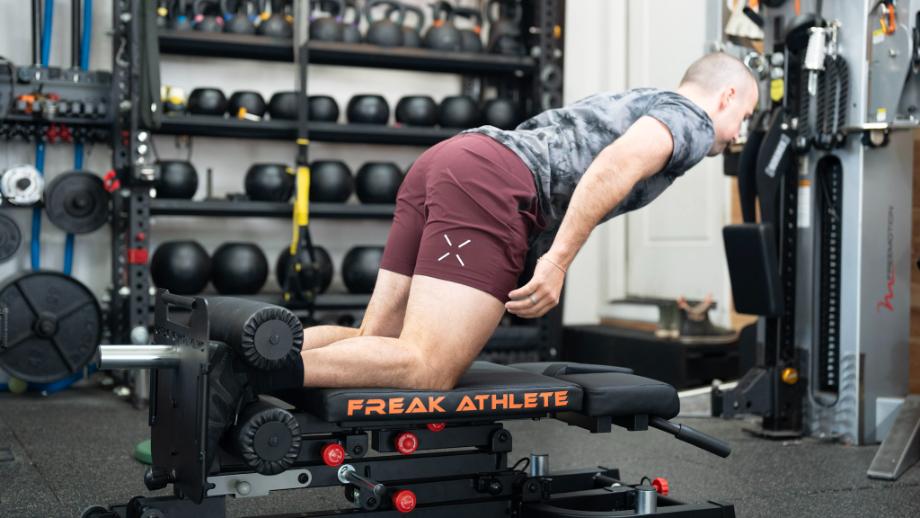We test and review fitness products based on an independent, multi-point methodology. If you use our links to purchase something, we may earn a commission. Read our disclosures.
When training your hamstrings, odds are you’ll go straight for the weight and rep-out the deadlift, or at the very least, target your hammies directly via a leg machine. But what about the bodyweight options you may be leaving on the table? For those occasions when you don’t have access to weights, the piece of equipment you need, or you just want to keep your leg training program simple, you need a solution that doesn’t sacrifice your gains.
That’s where the Nordic hamstring curl comes in. The Nordic curl uses the power of your body weight and eccentric muscle contraction to strengthen your posterior and reduce your chances of the dreaded hamstring strain, as found in 2017 Sports Medicine1 research.
In the tall-kneeling position with your heels secured, you’re using your hamstrings to slow your descent to the floor to add muscle and strength to this valuable muscle group. Don’t mistake the Nordic curl for being easy because it’s simple. The Nordic hamstring exercise will light up your hamstrings like never before. I—a longtime certified personal trainer (CPT)—will get into everything Nordic curl to beef up your leg day.
Let’s go ham!
How to Do the Nordic Curl
The Nordic ham curl is a full-body bodyweight calisthenic exercise that emphasizes your glutes, hamstrings, and core. Here’s how to perform it correctly.
Muscles worked: Glutes, hamstrings, anterior core, lower back, and calves.
How to do it:
- Secure your feet using a Nordic bench, a lifting partner holding your legs, or another weighted tool like a steady barbell.
- Begin in the tall kneeling position, ensuring muscular tension in your glutes, core, and hamstrings.
- Cross your arms in front of your chest and engage your upper back and lats.
- Maintain muscle tension and slowly lean forward, using only your hamstrings while lowering your body. Lower yourself to the ground as slowly and controlled as possible.
- Once you can no longer control your descent, catch yourself in a push-up position using your arms.
- From here, maintain muscular tension and push back to the starting position, using only your hamstrings to pull yourself up (only use your arms for the initial push).
- Reset and repeat for the desired repetitions.
RELATED: Best Nordic Benches
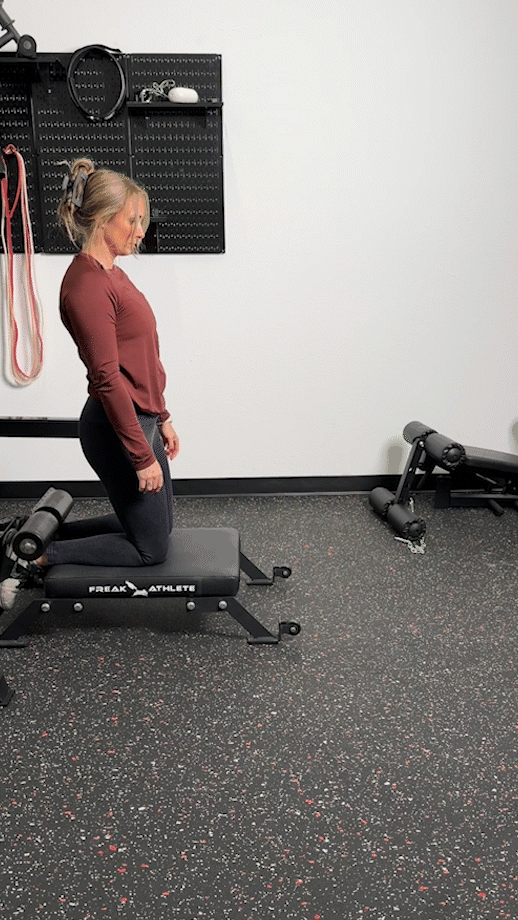
Trainer Tips for Form
The Nordic curl can be challenging but can also help improve your hamstring gains—though only if you do it right.
Here are a few CPT tips to get the best out of this dynamic leg exercise.
Pay Attention To Your Set Up
The Nordic curl hinges on having your feet fully secured in order to lower yourself down and back up with precision. Not properly setting yourself up for this movement turns it into an FTG exercise—face to ground.
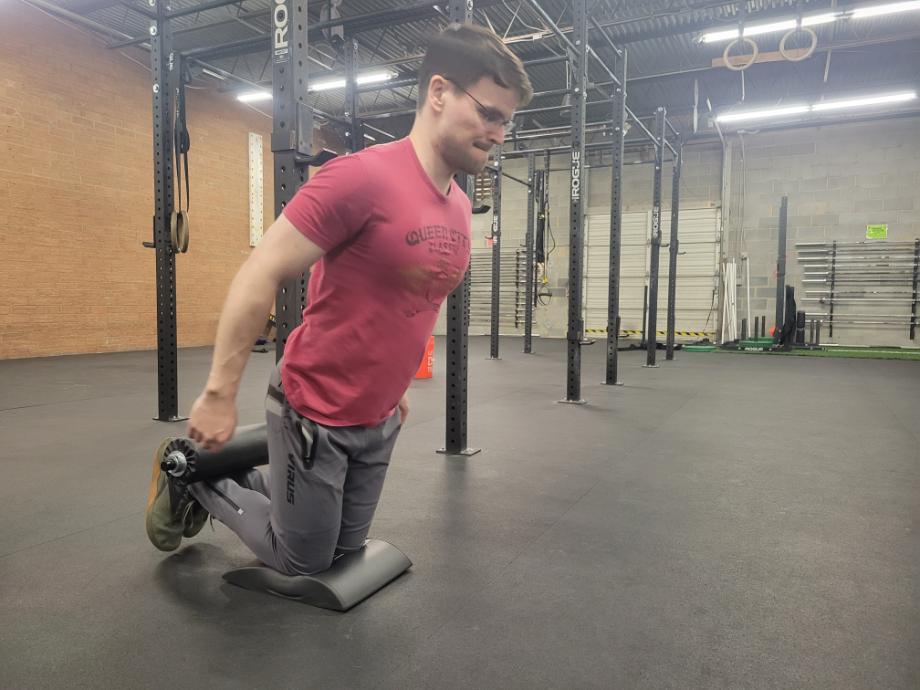
Squeeze It
Maintaining full-body muscular tension is the key to doing this exercise correctly and minimizing your risk of injury. Getting into the tall kneeling position, maintaining good posture, and using your hamstrings to control your descent require tension. It may be a quick fall from grace if you don’t maintain tension.
Maintain Control
Most supporting muscles contract isometrically (tension without movement) in order to support your hamstrings doing most of the work. Maintaining control of the descent using only your hamstrings is the key to performing this exercise well.
Nordic Curl vs. Glute-Ham Raise
The Nordic curl can sometimes be confused with another fantastic strength training exercise for the hamstrings, the glute-ham raise (GHR). Here’s what makes them similar and different.
RELATED: GHR Exercise
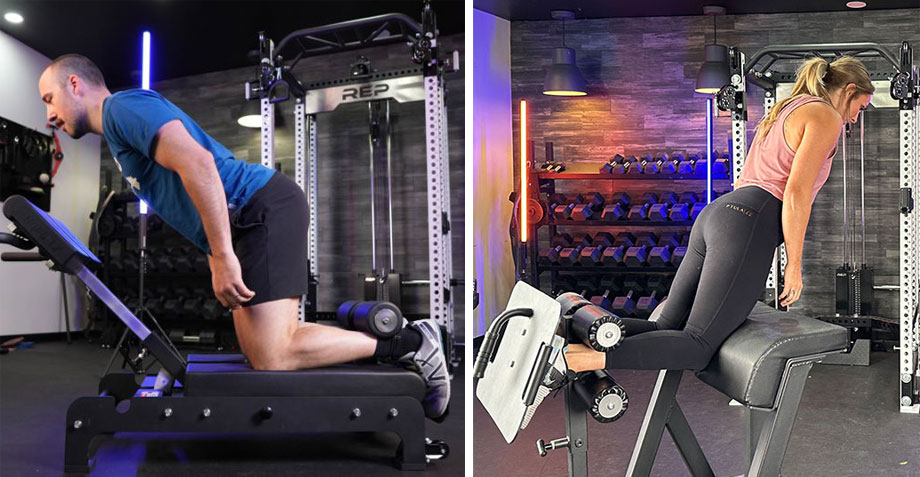
Similarities
- Both target the hamstrings
- Focus is on knee flexion
- Build eccentric strength in the hamstrings
- Allow greater time under tension for hypertrophy gains
Differences
- GHR requires a glute ham developer (GHD) machine, while with the Nordic curl, is more adaptable
- Nordic curl focuses on the three hamstring muscles: the biceps femoris, semitendinosus, and semimembranosus, while GHR also trains the glutes and core stabilizers
- GHR provides greater muscular tension due to the support of the GHD pad, while the lack of stability with the Nordic curl makes the hamstrings work harder
- You will sometimes require a partner to perform the Nordic curl, not the case with GHD
- GHD requires some instruction to set up, and form is challenging, while the Nordic curl is more straightforward
The key differences between these two lower-body exercises lie in the equipment required, the ease of execution, and the muscles targeted. The GHR provides more muscular tension with the knee and ankle pad support. At the same time, the Nordic curl offers more challenging and isolated hamstring training that can be performed with minimal equipment. The biggest similarities are that they both strengthen the hamstrings via knee flexion and require a large amount of eccentric strength.
Got it? Good.
Nordic Curl Benefits
This is what you all came for, correct? Besides giving you that baby-got-back look, here are some significant benefits of this challenging bodyweight exercise.
Injury Prevention
Reducing your risk of injury is the key to athletic performance because if you’re hurt, you’re not on the field. Hamstring strains happen when the muscle lengthens as it contracts, like sprinting. The Nordic curl focuses on the eccentric strength of your hamstrings, where these strains occur. This hamstring exercise has been shown to decrease the risk of hamstring injuries by 51% compared with those who didn’t do it.1
Accessibility
As previously mentioned, the GHR is a fantastic exercise, but you need specific equipment. Not so with the Nordic curl, which can be enhanced using a Nordic bench, but a soft spot for your knees and a partner (or heavy object) to anchor your feet is all you really require.
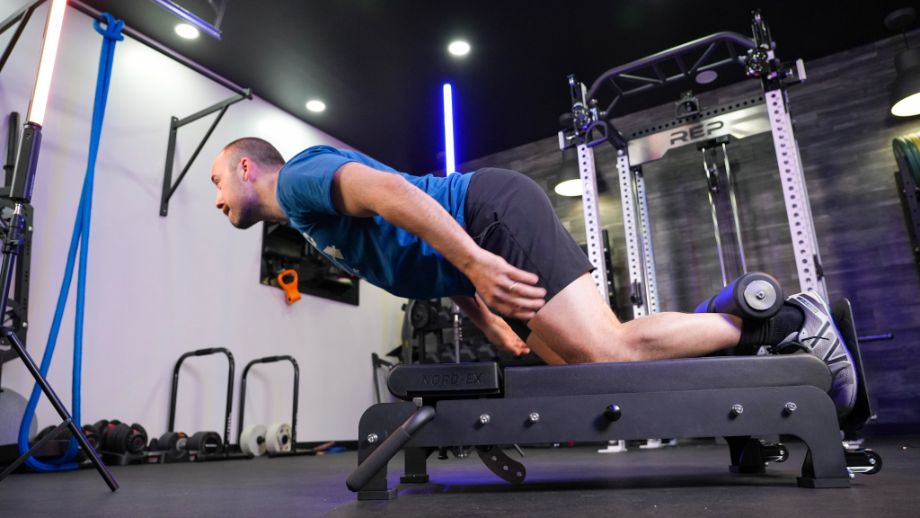
RELATED: Hamstring Exercises At Home
Improved Posterior Strength
When you don’t have a knee anchor point like with the GHR, the hamstrings work much harder to lower you toward the ground. Reduced stability means the hamstrings’ eccentric strength is pushed to its limit. What does that mean for you? More hamstring gains.
Boosts Balance and Proprioception
Proprioception and balance mean you are aware of your body in space while remaining upright. The Nordic curl only has two points of contact (your knees) and the anchor point at the ankle. With each rep, you must control every muscle as you lower yourself toward the ground. If not, you know what will happen. Face plant.
Common Nordic Curl Mistakes
Making mistakes is natural, particularly with something as tricky as the Nordic curl. But knowing what to look out for will shorten the learning curve and keep you safe. Here are some common mistakes to avoid when doing this effective exercise.
Not Maintaining Tension
Setting aside not setting up correctly—which you should absolutely do for your safety—losing muscular tension in your upper back, core, and glutes will get your spine out of position, particularly your lower back. This will take the focus off the point of the exercise, strengthening your hamstrings.
Losing Control
Although it is common to push yourself back to the starting position quickly, controlling each part of the range of motion is better to improve your gains. Lowering yourself slowly on the eccentric, only giving out once needed, is best. A quick note of the eccentric: try not to be a hero and wait until the last moment to use your hands.
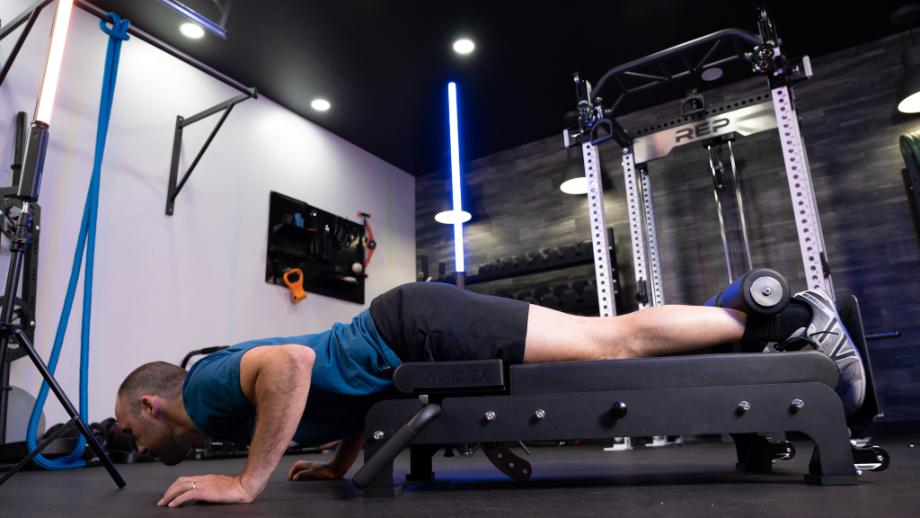
How to Program the Nordic Curl
Due to the Nordic curl’s eccentric nature, it will create some soreness. You have been warned. Before getting into sets and reps for specific goals, let’s get to where it needs to be placed in your program.
Due to its focus on one muscle group, it’s best to program the Nordic curl as an accessory exercise after your deadlifts and squats. Let the Nordic curl replace any hamstring strength exercise in your workout program. Here are some general set and rep recommendations for fat loss, muscle gain, and strength.
- Improved strength: Perform 3-5 sets of 5-8 reps. Rest for 2-3 minutes between sets and never go to failure.
- Improved muscle gain/fat loss: Perform 3-4 sets of 8-12 reps, resting 2 minutes between sets and never going to failure.
Nordic Curl Alternatives and Regressions
If the Nordic curl is not for you or you want some variation in your hamstring training, take these Nordic curl alternatives out for a spin.
Stability Ball Nordic Curl
Why do it: The stability ball guides you into the Nordic curl position easier while still working your hamstrings.
How to do it:
- Get into a tall kneeling position with your feet flat against a wall and a stability ball at arm’s length.
- Place both hands on the ball close together, and engage your anterior core and glutes.
- Slowly roll forward, using your hamstrings to control the descent.
- Once you have reached your desired depth, use your hamstrings to pull you back to the starting position.
- Reset and repeat for desired repetitions.
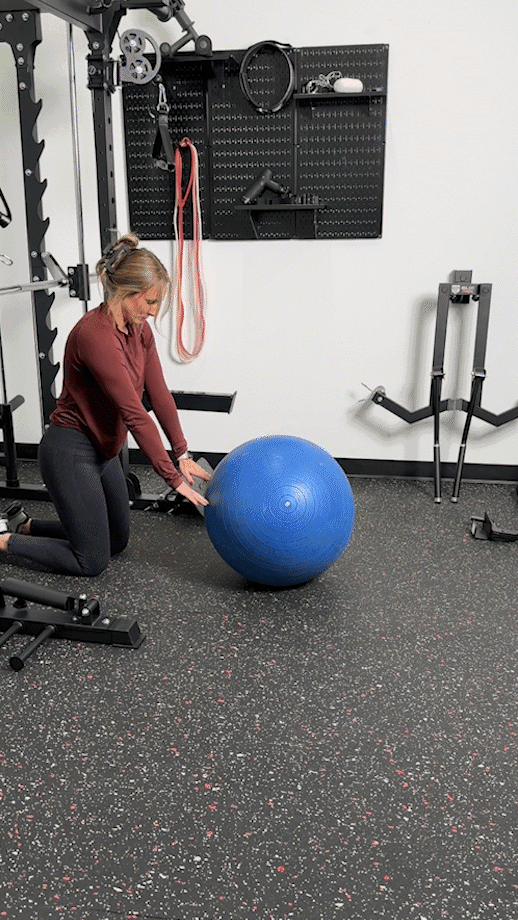
Ball Leg Curl
Why do it: The stability ball leg curl is a more manageable, minimal-equipment version of the leg curl, and the stability ball makes the hamstrings work hard to perform the knee flexion movement.
How to do it:
- Lie supine on the floor and place your heels on top of the stability ball with your legs straight.
- Perform a straight leg hip extension and “curl” the ball towards you until your knees are bent at 90 degrees. Your body should form a straight line.
- Slowly straighten your legs and return to the straight leg hip extension position.
- Reset, and repeat.
RELATED: Stability Ball Exercises
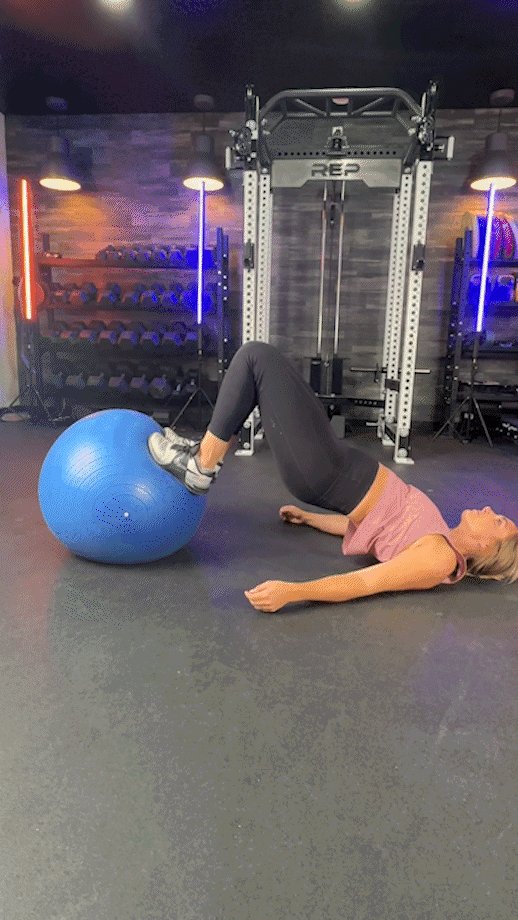
Glute Ham Raise
Why do it: The increased stability of the knee pad makes this movement slightly easier than the Nordic curl and brings the core and glutes more into the equation.
How to do it:
- Adjust the glute hamstring raise equipment so your feet are secured and your quads rest on the middle of the pad. Ensure you have enough space to lower your torso.
- Start with your knees bent at 90 degrees and your upper body straight.
- Then, push both feet into the pad, slowly extend your knees, and lower your torso forward until you are horizontal.
- Return to the start by contracting your hamstrings.
- Reset and repeat for desired reps.
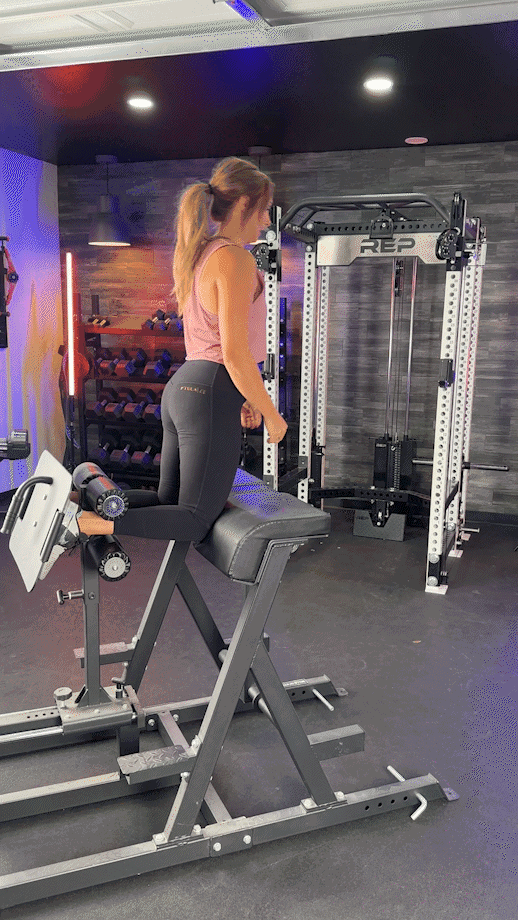
Nordic Curl Equipment
Although you don’t need equipment for this exercise, there are two pieces of equipment to help improve your Nordic curl game.
Nordic Curl Bench
Having some sort of knee comfort, mainly if your knees are sensitive, is a common issue to overcome. But with the Nordic curl bench, you have a secure place for your knees and feet, so all you have to worry about is working your hamstrings.
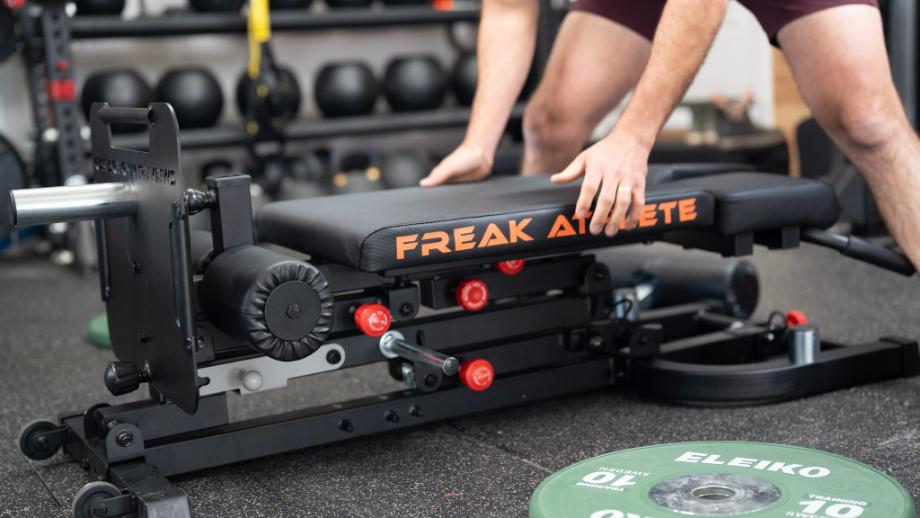
Check out our in-depth Freak Athlete Nordic Hyper GHD review for a bench that can transition from Nordic to GHD to hyperextension.
Nordic Curl Straps
The Nordic curl straps solve the issue of securing your feet so the user can focus on their hamstrings. You simply place the strap near the edge of a weight bench, put your feet inside with your toes off the edge, tighten it, and off you go.
Nordic Curl: FAQs
Who are Nordic curls suitable for?
Nordic curls require a fair amount of eccentric strength, so beginners should focus on other hamstring curl variations before doing this. This exercise is more suited to the intermediate or advanced lifter with a better base of strength.
Are Nordic curls difficult?
The short answer is yes. Nordic curls can be difficult due to the small base of support (your knees) and the eccentric strength required to do them. That said, they have a lower risk for injury and don’t require as much equipment, so with patience and practice they can still occupy a spot in your leg day line-up.
How does a leg curl differ from a Nordic curl?
The Nordic curl is predominantly an eccentric-based movement, while most leg curl variations involve concentric and eccentric muscle contractions.
Do Nordic curls help knee pain?
The hamstrings function as a knee joint stabilizer. Think of the hamstring like brakes on a car because they both slow you down. Strengthening your hamstrings will improve your knee strength, which may help reduce knee pain. Nordic curls have also been shown in a 2023 Scientific Report2 to aid in knee rehabilitation after injury.
References
- Al Attar WSA, Soomro N, Sinclair PJ, Pappas E, Sanders RH. Effect of Injury Prevention Programs that Include the Nordic Hamstring Exercise on Hamstring Injury Rates in Soccer Players: A Systematic Review and Meta-Analysis. Sports Med. 2017 May;47(5):907-916. doi: 10.1007/s40279-016-0638-2. PMID: 27752982.
- Chen J, Wu T, Guo Y. Nordic hamstring exercises in functional knee rehabilitation after anterior cruciate ligament reconstruction: a prospective, randomised, controlled study. Sci Rep. 2023 Nov 3;13(1):19039. doi: 10.1038/s41598-023-45817-6. PMID: 37923738; PMCID: PMC10624851.
Further reading

When training your hamstrings, odds are you’ll go straight for the weight and rep-out the deadlift, or at the very least, target your hammies directly via a leg machine. But what about the bodyweight options you may be leaving on the table? For those occasions when you don’t have access to weights, the piece of equipment you need, or you just want to keep your leg training program simple, you need a solution that doesn’t sacrifice your gains. » Read more about: Power Up Your Hamstrings With The Nordic Curl » Read more

In our WOD Nation Double Under Speed Rope review, we’ll go over this speed rope with great detail and share why it might be a good pick for your home gym. Read more

Looking for the best quiet treadmill? We’ve done all the dirty work so you don’t have to stress. Read more

Are you tired of doing the same bent-over rows every back day? Spice up your routine with some of our favorite expert–backed bent-over row variations! Read more

